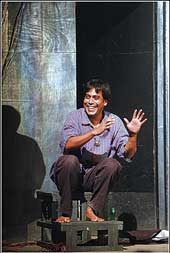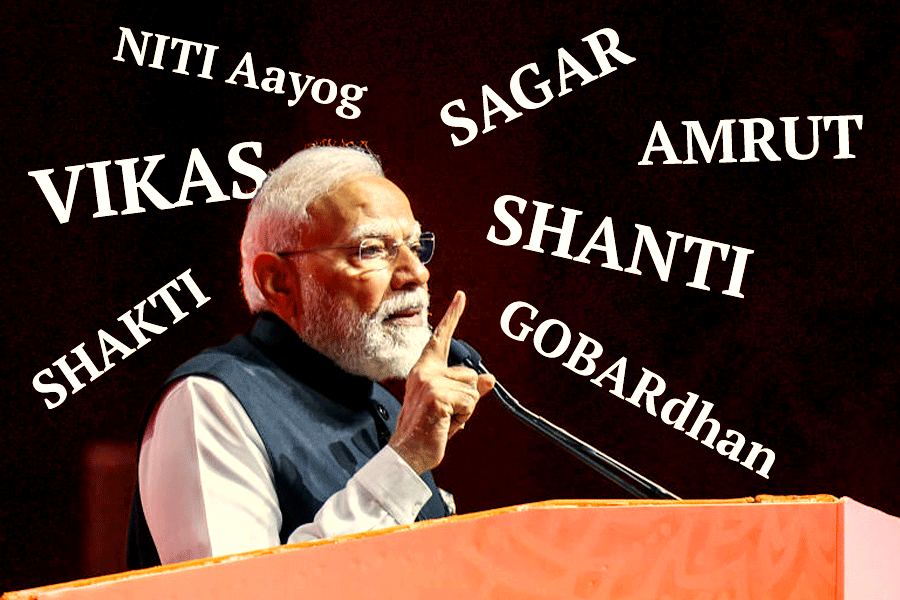 |
| Debshankar Halder in Ea |
S anskriti’s latest production, Ea (September 17, Academy of Fine Arts), explores the psyche of an ordinary man whose struggle to make sense of why he exists leaves the sphere of internal conflict and spills into the outer world. And we see him exposed in his mad rush to prove to himself and to others that he is not like everybody else.
The protagonist, who is the sole character (other than the masked actors who are more a part of the background and prop), goes to absurd lengths to establish some sort of a unique raison d’etre. For instance, in a desperate attempt to find within himself traces of individuality, plagued as he is by his own sense of ordinariness, he discovers that he is capable of remembering all sorts of statistics and figures. So he takes to counting stairs at subway stations and other public places all over the city and provides the information to anyone who is interested.
There is little by way of action and the plot unfolds essentially through a monologue. And evidently the director Debesh Chattopadhyay zeroes in on a solo performance for two reasons — one to depict the insularity of the protagonist and the other to show off the histrionic range of Debshankar Halder, who portrays him.
While Halder’s acting is not without its shortcomings — especially his stereotypical, unexplainably pejorative mimicry of women — he nevertheless keeps the audience captivated for almost two hours on a stage which, for the most part, depicts his character’s mental space.
Of course, it is not easy to convincingly depict mental space on stage. Especially if it is an angst-ridden one. But the director does it believably, if predictably, with a mostly dark, dimly-lit stage and a set that is undefined in its lack of any logical or familiar order, using props interchangeably to depict anything from stairs to cells in mental hospitals.
Light and sound, while evocative, could be used more innovatively. There is no surprise, for instance, when sparks of ideas in the protagonist’s mind is indicated through flashes of light or the bursting-bomb like sound.
Translated into English, the Bengali word Ea could mean anything from “whoever” to “watchya-may-call-it” and this Bengali adaptation of a Peter Bichfel story conveys all its associated obscurity with stage, set and action (mostly the actor’s ability to portray the inability of his character’s journey from “anybody” to “somebody”).











